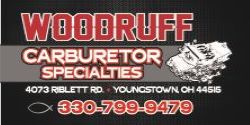BSB67
Well-Known Member
The standard Performer and the DP4B are identical in every measure, but symmetrically opposite in design. They are both a nice step up from the factory manifold on a modified engine. Likely the best choice for what it sounds like the OP is doing.
You already have both intakes. An intake swap takes an hour at most. Try them both and use what you think is best.
When you are having the heads done, consider milling the intake surfaces so you can run paper gaskets on both sides of the pan.
You already have both intakes. An intake swap takes an hour at most. Try them both and use what you think is best.
When you are having the heads done, consider milling the intake surfaces so you can run paper gaskets on both sides of the pan.
Last edited:















